From Cairo, we flew by plane to Luxor. Located some 500 miles south of the Mediterranean on the east bank of the Nile, Luxor feels more like a resort town than a crowded city, and we enjoyed the more relaxed feel the city provides.
Right from the airport, we headed to the Karnak Temple complex, part of the ancient Egyptian capital of Thebes. Covering more than 100 hectares, it's an enormous collection of temples, chapels, pylons, obelisks, and statues. Built over the periods of the Middle Kingdom through Ptolemaic times, the complex was constructed at the direction of some 30 pharaohs, and as a result has unparalleled size, complexity and diversity. One can only try to imagine the work and workers it took to construct something on this scale.
The complex is entered through rows of statues and columns on either side of a paved street.
The first pylons or gates rise up behind the guarding sphinx-like statues.
Through the gates are more columns, halls, chapels, obelisks, paintings and hieroglyphs.
We headed first to Khonsu Temple, built to honor Khonsu, the lunar god depicted as a man with a falcon head crowned by the moon above it. You can see him below being given offerings by the person on his right.
This temple is almost complete but under restoration work and not open to the public. however, our group of mostly archaeologists was privileged to have a tour of the temple and the work being done by the engineer running a conservation field school there. They were cleaning the paintings and some restoration had been done as well. The next photo shows the contrast after cleaning; not the small cleaned square piece of the wall.
Here are some of the paintings after restoration. Just magnificent!

After the morning of exploring at Karnak, we were able to check into our hotel. In the afternoon the Luxor Temple was our destination. In ancient times, a paved road ran between the Karnak Temple complex and the Luxor Temple. These human-headed sphinxes have been reconstructed in recent years to give the appearance of what it used to be like.
Again, the pylons are the entrance to the complex.
Luxor Temple was excavated in the late 1800s after centuries of local people living on and around it. The buildings and rubbish accumulation had created an artificial hill of some 48-50 feet in height on top of the temple area. This mosque still remains built on top of the stones of the original complex.
Day 2
Our destinations the second day were north of Luxor. Though the distance didn't seem very great on a map, the trip took several hours because we drove through many small villages and because we, as a tourist bus, were required to be accompanied by a police escort the entire way. This put us at their pace and stopping schedule. However, village life along the Nile and its canals was interesting to watch out our windows.

A feature in this temple which had major significance for scholars is the Kings List below. It features the cartouches of almost all the pharaohs from the beginning until Seti himself.
The carvings and paintings on the walls are very well preserved.
Next we got back in our bus and headed for the Temple of Hathor, goddess of love, at the Dendera Temple complex. This temple is considered one of the best preserved of all the temples in Egypt.
Imagine how beautiful this must have been at its prime.
On one of the external walls of the temple is this huge, carved relief of Cleopatra VII and her son by Julius Caesar and co-ruler Ptolemy XV, both in Egyptian dress and offering sacrifices.
The ride home was again slow, and as we rode the sun set across the Nile canals alongside our route.
Day 3
This day's transportation to the Valley of the Kings included crossing the Nile to the west bank by boat.
The Valley of the Kings -- the ancient Theban necropolis -- was the preferred burial site for over 500 years (between 1539 - 1075 B.C.) for pharaohs, queens, high priests, and other elites. Sixty-three tombs have been discovered so far, though not all are open for the public.
This model in the visitor's center shows the tomb area from above and then from below, so one can see the length and depth comparisons between the tombs.
I chose to visit three tombs. First, Ramses IV. You descend into each tomb through a passageway of reliefs and paintings. Obviously, the wooden walkways and handrails are not from ancient times.
Finally, you reach the sarcophagus in the burial chamber.
The tomb of Ramses IX for some reason allowed no photo-taking, but it wasn't more impressive to me than the others I saw.
On the way to the last tomb I visited, I passed the entrance to the tomb of the famous Tutankhamun. I chose not to pay extra to see this tomb, as those that had seen it said it is small and "underwhelming." Also, the contents of the tomb were on display at the Cairo Museum.
The tomb of Tausert/Setnakht is a little walk farther away from the others, into the valley.
This was cabbage, carrots, and oranges.
Here we had a delicious tempura-like cauliflower.
The the drink I ordered was cold hibiscus tea. Very refreshing.
The setting made for a beautiful, peaceful end of the day of touring. We were located right beside a working farm, growing fresh vegetables and fruits, and raising a cow and camels.
I loved seeing this ibis with the camels. He went from one to the other, and everyone seemed at peace.
Peace, salam, shalom.
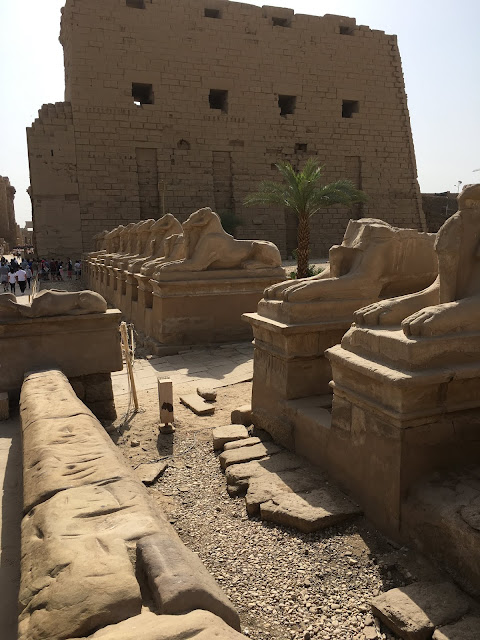












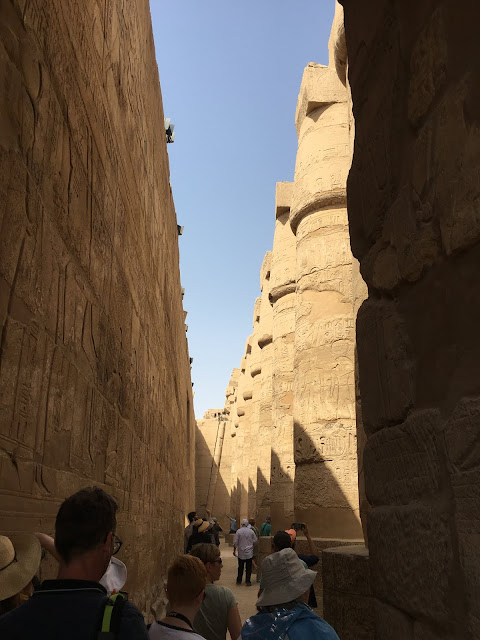





































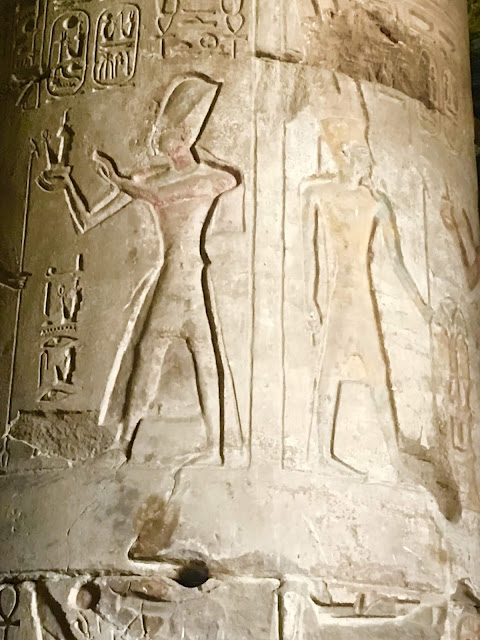
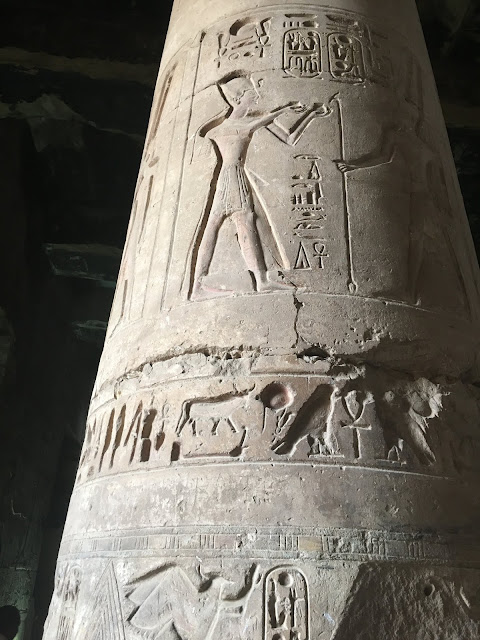
































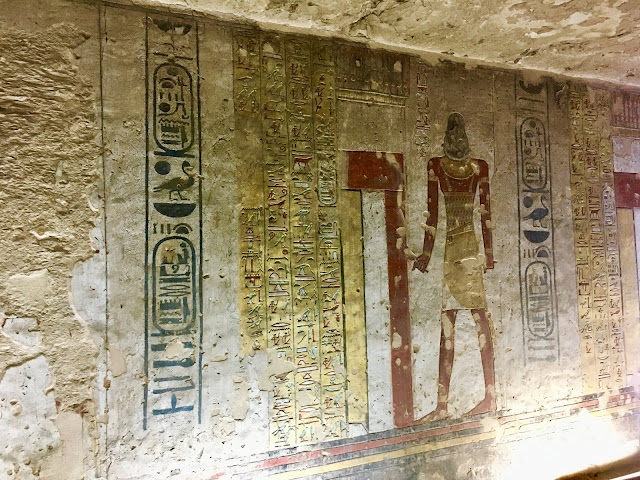











No comments:
Post a Comment